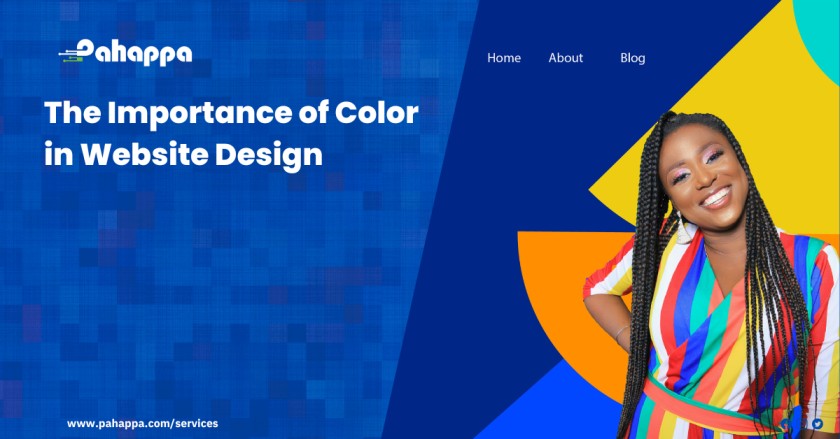Color is an essential aspect of website design that can have a significant impact on the user’s experience. A well-designed color scheme can not only make a website look visually appealing but can also influence how users perceive and interact with the site. The use of color can convey emotions, create a sense of hierarchy, and reinforce brand identity. In this article, we will explore the importance of color in website design and the factors to consider when choosing the right color scheme for your website.
What does color in website design mean?
Color in website design refers to the unique hues, tints, and shades used in a web page’s background, text, buttons, links, and graphics of a web page.
Color is an important element of website design, as it can impact a website’s overall look, feel, and user experience.
Importance of color in website design
Creates emotional responses
Colors significantly affect people’s emotions and can be used in website design to do so. Warm hues like red, orange, and yellow, for example, evoke feelings of excitement and vitality, whilst cooler hues like blue and green, on the other hand, evoke feelings of calmness and relaxation.
Reinforces branding
Branding is reinforced by using colors consistently across the design of a website. This helps to establish a recognizable visual language for the website. This can help to increase brand recognition and make the website more memorable to users.
Draws attention
By using contrasting hues, you can direct users’ attention to certain web page features, such as calls to action or important information. This may help to improve user experience and increase website engagement.
Improves readability
The proper use of color can improve a website’s readability by making it simpler for visitors to read the text and navigate the site. For example, using high-contrast colors for text and background can make it easier to read, particularly for users with visual impairments.
Creates a feeling of hierarchy
A website’s many sections can be distinguished from one another by utilizing a different hue. This can make it easier for users to explore the website and understand how the content is arranged. For the primary navigation menu, for example, having a deeper or brighter hue might make it stand out and make it easier for people to navigate the website
Conveys professionalism
A sense of credibility and expertise can be communicated by using a professional color palette. This can be important, especially for commercial or e-commerce websites since it can build consumer loyalty and boost conversion rates.
Factors to consider when choosing the right color for your website
Brand identity
The color scheme of your website should be based on the colors of your brand. It strengthens your brand identification and increases the recognition of your brand among your target market when your website and other marketing materials are consistent. Consider your logo’s colors and how they can be incorporated into the website’s design.
Target audience
Consider the age, gender, geography, and cultural background of your target audience. It’s important to choose colors that appeal to your target audience because they can trigger various emotions and have various cultural associations. For example, you might want to choose more muted, traditional colors if your target market is mostly elderly, conservative people.
Purpose of the website
Consider the purpose of your website and the message you wish to communicate. If the theme of your website is healthcare, you might want to use soothing, peaceful colors that inspire trust and security. Choose bright, bold colors that evoke a sense of energy and excitement if your website is focused on entertainment or excitement.
Color psychology
Different colors can evoke different emotions and moods, so it’s important to choose colors that align with your brand message and the overall purpose of your website. For example, green is often associated with health, nature, and growth, while red is associated with passion, excitement, and urgency.
Contrast
Making your website easy to read and navigate requires choosing the proper color contrast. For people with visual impairments, high contrast between text and background colors can improve readability and accessibility. Use tools like WebAIM’s contrast checker to ensure that you have tested the color contrast on your website.
Accessibility
While designing a website, accessibility is a key factor. Make sure the colors you choose are accessible to people who have visual impairments, such as color blindness. Use high-contrast colors to make sure the text is readable and avoid relying on color alone to convey information.
Trends
Keeping track of color trends in web design can make your website appear more modern and up-to-date, but trends can also go out of style very quickly. Consider long-term trends that will still be in style as well as timeless color schemes that will still be effective in the future.
The use of color in website design is a crucial aspect that should not be overlooked. Remember that color is a powerful tool in website design, and with a thoughtful approach, you can use it to create a website that stands out and engages your audience. Contact us today for professional website development services.











